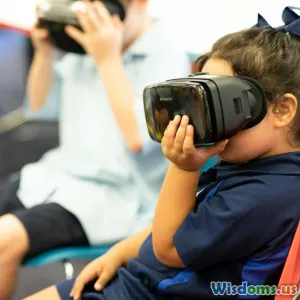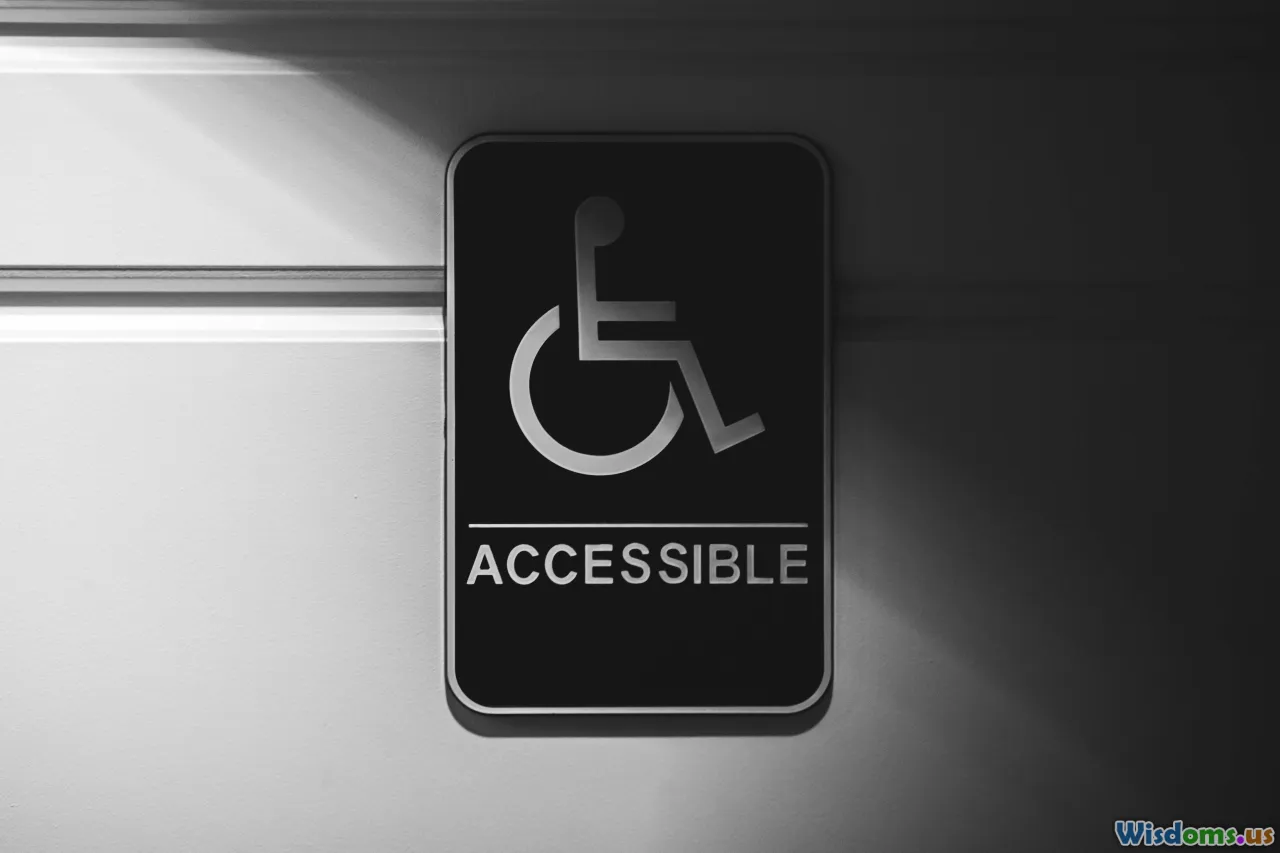
Top Trends In Public Speaking Education For 2024
16 min read Explore the latest 2024 trends transforming public speaking education, from AI-driven feedback to immersive virtual training and inclusivity-focused learning innovations. (0 Reviews)
Top Trends In Public Speaking Education For 2024
Public speaking, once regarded as a classic, unyielding skill set, is undergoing dramatic transformation in today's digital and interconnected world. The landscape of speeches, presentations, and personal storytelling has evolved, responding dynamically to changes in technology, culture, and pedagogy. In 2024, these shifts crystallize into emerging trends that are shaping how public speaking is learned, practiced, and evaluated!
Dive into the latest developments guiding public speakers and educators, from AI-enhanced practice sessions to virtual reality classrooms—and discover strategies to elevate your speaking mastery this year.
AI-Powered Personal Coaching

Artificial intelligence is revolutionizing public speaking education by making tailored feedback universally accessible. Conventional coaching—costly, location-bound, and time-intensive—is being superseded by AI-driven platforms that analyze user speeches in real-time.
Take, for example, tools like Yoodli and Orai. These applications listen to your speech (via audio or video uploads) and generate feedback on pacing, filler words, tone, and even sentiment. An aspiring speaker practicing a TED-style talk receives data-backed insights: how many times “um” slipped in, how fast the slides progressed, and what moments prompted monotone delivery. Refined AI algorithms also gauge facial expressions and gestures to train non-verbal communication—a longstanding challenge for remote speakers.
How to Leverage This Trend:
- Utilize AI-powered apps to record and analyze your practice sessions.
- Combine AI feedback with peer or mentor reviews for a balanced approach.
- Regularly track specific metrics—like vocal variety or hand gestures—to witness tangible progress.
AI democratizes coaching, removing the gatekeeping of geography and cost. In 2024, even novice public speakers can practice and receive expert-caliber analysis from the comfort of their homes.
Rise of Virtual and Augmented Reality Training

Virtual and augmented reality (VR/AR) are bridging the gap between theory and nerve-wracking experience. Once confined to simulators for pilots or surgeons, these immersive techs now host robust public speaking classrooms.
Imagine strapping on a headset and stepping into a packed virtual auditorium—or facing a boardroom of avatars, complete with realistic ambient noise and shifting audience attention. Startups like VirtualSpeech and Ovation provide precisely this, allowing learners to gradually acclimate to stressful environments. Research conducted at the University of California found that students who practiced in VR environments reported reduced anxiety and gained confidence faster compared to traditional rote-learning groups.
How to Practice Effectively in VR:
- Begin with small, virtual meetings before scaling up to lecture hall-sized audiences.
- Record sessions (VR platforms often allow this) and replay to pinpoint posture and delivery strengths or weaknesses.
- Use AR prompts for impromptu questions or feedback during the session.
These immersive scenarios not only hone verbal skills but also train composure—critical for on-stage or high-stakes business presentations.
Focus on Storytelling and Authenticity

In previous years, public speaking education emphasized structure—organizing the introduction, body, and conclusion meticulously. In 2024, there's a marked pivot towards storytelling and authentic self-expression.
Today's audiences, swamped by content fatigue, crave genuine stories over formulaic information dumps. Leading programs—like Toastmasters International or Dale Carnegie—now dedicate substantial modules to narrative techniques: using personal anecdotes, humor, and emotional highs and lows to foster connection. A study at Stanford’s Graduate School of Business found messages delivered through stories are remembered up to 22 times more than facts alone.
Tips for Infusing Storytelling in Your Speaking:
- Open with a relatable, personal anecdote—even one that reveals vulnerability or failure.
- Practice the classic storytelling elements: setup, confrontation, and resolution.
- Employ vivid sensory details to animate your narrative.
- Tie each story to your key message or lesson for maximum audience impact.
Authenticity isn't just about what you say, but how you say it. Hone your unique voice, embrace quirks, and strive for a powerful, memorable connection.
Emphasizing Cross-Cultural Communication

The rise of remote work and global webinars has expanded the typical audience, making cross-cultural fluency more essential than ever. In 2024, successful public speakers understand and adapt to diverse cultures, communication styles, and linguistic nuances.
For instance, humor that captivates a New York audience may fall flat in Tokyo or Berlin. Even gestures like a thumbs-up or patterns of eye contact can vary in interpretation cross-culturally. Progressive public speaking curriculums now include modules on cultural taboos, inclusive language, and audience analysis for international contexts. The Harvard Extension School has introduced virtual exchange programs where students present to peers worldwide, receiving feedback on both clarity and cultural sensitivity.
Best Practices for Cross-Cultural Public Speaking:
- Research your audience’s cultural background before preparing content.
- Avoid idiomatic expressions and jargon unless you're certain of comprehension.
- Practice with global peers via online classroom exchanges or platforms like Language Exchange.
- Foster inclusion by acknowledging and respecting diverse perspectives in your proposals or examples.
In a borderless speaking arena, boisterous charisma only gets you so far—true resonance relies on thoughtful, culturally aware communication.
Bite-Sized and Microlearning Formats

Attention spans are waning, and the time for drawn-out monologues is dwindling. In the digital era, people prefer short, focused lessons accessible from any device. Microlearning concepts—educational strategies using brief, targeted modules—are redefining how public speaking is taught and practiced.
Online learning hubs like Coursera, Udemy, and LinkedIn Learning have introduced micro-courses: ten-minute videos focused on specific techniques, like "conquering stage fright" or "delivering a compelling call-to-action." Local universities distribute 2-minute feedback drills through apps, challenging students to compose an elevator pitch or rebuttal on the spot. This modular approach increases knowledge retention and allows busy professionals to fit learning into tight schedules.
Ways to Utilize Microlearning:
- Break speeches and rehearsals into manageable, focused drills (introduction, closing, Q&A segments).
- Use mobile apps to practice and log daily short performances—track improvement over weeks.
- Assign micro-tasks to yourself or your group: one day focus on voice modulation, next on pacing, etc.
Microlearning enhances both accessibility and sustained progress, encouraging deliberate, consistent practice that pays off substantially in live presentations.
Data-Driven Feedback and Skill Tracking
Another profound shift this year is the employment of detailed tracking and analytics to accelerate improvement. Where subjective evaluation once reigned, 2024 introduces dashboards detailing everything from time spoken to audience engagement metrics and progression over time.
Modern public speaking courses and platforms incorporate built-in analytics—such as Wordly’s real-time translation and engagement tracking, or Gnowbe’s interactive leaderboards—to provide speakers with concrete data on their performance. At an executive seminar, leaders might gauge not only how often they made persuasive appeals, but also how frequently they engaged the audience with questions, or accurately interpreted reactions based on video analysis.
Practical Steps for Harnessing Data:
- Regularly review and reflect on digital feedback reports and identify trends.
- Set incremental, measurable goals (e.g., reducing filler words by 30% in one month).
- Use dashboards to compare benchmarks against peers or top speakers to set higher standards.
Objective data transforms blind spots into actionable insights, bridging the gap between knowing and showing improvement.
Expanding Beyond the Podium: Podcasting and Digital Video

Speaking in front of an audience is no longer limited to physical settings. The explosion of podcasting and online video has popularized new forms of public engagement, prompting educators to update and diversify their curricula for the digital media age.
According to a 2023 Edison Research report, more than 104 million Americans listen to podcasts monthly, and YouTube attracts over 2 billion active users each month. Effective online speakers need to translate their skills to different formats: video essays, streaming presentations, panel podcasts, and more.
Leading public speaking instructors now include podcast scripting, videography, and remote interviewing as integral parts of coursework. For example, Columbia University's Journalism School offers hands-on modules in creating audio content for social media and teaching non-verbal delivery suited for the camera.
Tips to Excel in Digital Speaking Formats:
- Learn the essentials of voice projection and pacing for audio-only presentations.
- Practice concise, dynamic storytelling for time-limited formats like YouTube Shorts.
- Experiment with lighting, background, and camera presence for visual mediums.
- Embrace interactive audiences (live streaming, Q&As) to simulate real-world engagement.
A versatile speaker in 2024 isn't just compelling on a physical stage—but adaptable across digital platforms, leveraging each to advance their message and influence.
Accessible Tools for Neurodiverse and Anxious Speakers

Accessibility has come to the fore in public speaking education—a trend set to expand rapidly this year. For people with social anxiety, learning differences, or neurodiverse identities, emerging tools and methods enable participation without barriers.
Apps such as Moment Pebble (a biofeedback gadget for anxiety control) and Prompster (visual teleprompter with adjustable speed and contrast) cater to varied needs. More curriculums are integrating resilience-building strategies and mindfulness, coupled with quieter, alternative approaches to expressing ideas—like asynchronous video submissions or collaborative storytelling—instead of traditional solo speeches.
Organizations like the Anxiety and Depression Association of America advocate for peer-supported speaking clubs tailored to individuals coping with glossophobia (the fear of public speaking), making safe, gradual exposure the priority.
Inclusive Practice Tips:
- Leverage supportive technology (visual cues, pace-control apps, anxiety trackers) to practice at your own comfort level.
- Look for educational groups or platforms that foster inclusive, supportive environments.
- Remember that great speaking isn't about emulating extroversion but finding your own confident comfort zone.
A more empathetic and inclusive framework ensures everyone, regardless of background or temperament, can participate and flourish.
Hybrid and Blended Learning Environments

Campus-only or entirely online? In 2024, there is a growing prevalence of hybrid and blended learning setups that combine the best of both modalities. Public speaking classes and workshops now use in-person, live online, and self-paced e-learning elements to maximize engagement and flexibility.
MIT has piloted a "Speaker’s Lab" where students attend live sessions, complete online drills, and participate in group reflections all in considered frameworks. The results: improved attendance, more insightful peer feedback, and deeper skill transfer across formats.
Best Practice Recommendations:
- Schedule a mix of face-to-face and virtual delivery rehearsals to experience varying audience dynamics.
- Leverage asynchronous feedback tools (video uploads, peer comments) between live sessions for iterative improvement.
- Adapt speech strategy depending on medium—expansive gestures work better on stage, micro-expression is crucial on camera.
Blended learning harnesses reach and flexibility while retaining the irreplaceable value of real-time human interaction.
As these trends reshape public speaking education in 2024 and beyond, they're powering a new era of confident, authentic communicators. From AI feedback and VR immersion to inclusive practices and digital content mastery, speakers who embrace these tools and mindsets will surpass traditional boundaries—captivating audiences whether face-to-face or thousands of miles apart.
Rate the Post
User Reviews
Popular Posts




















